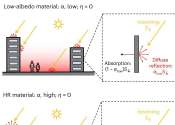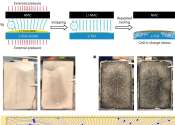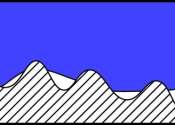In mathematics, specifically in topology, a surface is a two-dimensional topological manifold. The most familiar examples are those that arise as the boundaries of solid objects in ordinary three-dimensional Euclidean space R3 — for example, the surface of a ball or bagel. On the other hand, there are surfaces which cannot be embedded in three-dimensional Euclidean space without introducing singularities or intersecting itself — these are the unorientable surfaces.
To say that a surface is "two-dimensional" means that, about each point, there is a coordinate patch on which a two-dimensional coordinate system is defined. For example, the surface of the Earth is (ideally) a two-dimensional sphere, and latitude and longitude provide coordinates on it — except at the International Date Line and the poles, where longitude is undefined. This example illustrates that not all surfaces admits a single coordinate patch. In general, multiple coordinate patches are needed to cover a surface.
Surfaces find application in physics, engineering, computer graphics, and many other disciplines, primarily when they represent the surfaces of physical objects. For example, in analyzing the aerodynamic properties of an airplane, the central consideration is the flow of air along its surface.









